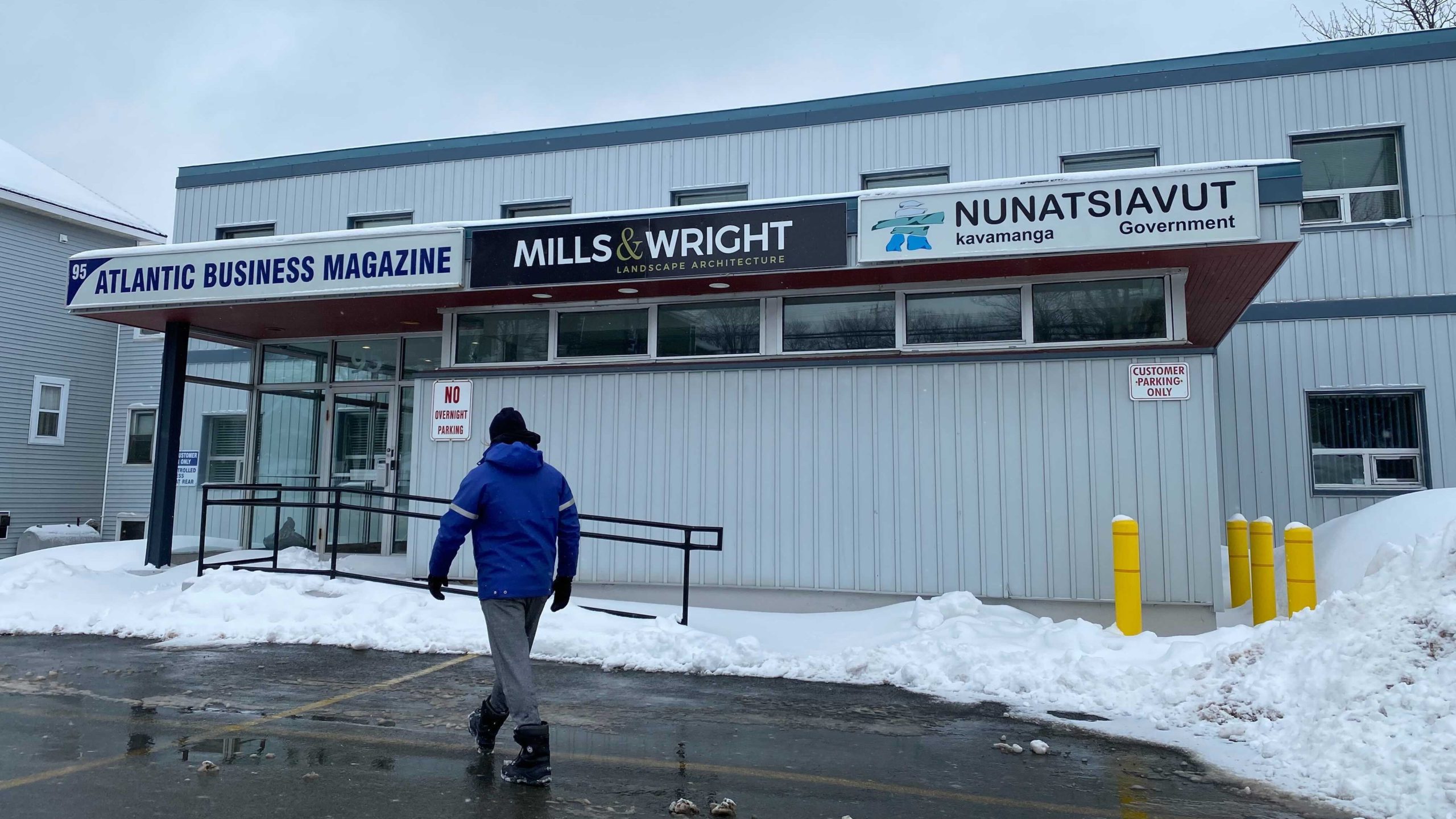What Nova Scotia could learn from Nunatsiavut’s COVID-19 vaccination plan
Community-based approach worked in Labrador

caption
Nunatsiavut government office in St. John’s, N.L., located on LeMarchant Road.While Nova Scotia has been slow to get vaccines into First Nations communities, the Nunatsiavut government in Labrador is already administering second doses.
Nunatsiavut began the distribution of the Moderna vaccine to adults in early January.
As of Thursday, 71 per cent of the five Labrador Inuit communities have been inoculated with a first dose, said Gerald Asivak, minister for the Department of Health and Social Development.
The communities — Makkovik, Postville, Hopedale, Nain and Rigolet — have limited health-care services and equipment such as respirators. Related stories
“In the event that COVID transmission was in our communities, our health clinics would not be able to provide the adequate immediate attention and care for the residents,” Asivak said.
The vaccines were administered by a team of public health nurses who left Happy Valley-Goose Bay by air charter to fly to each community.
Makkovik, a community of about 377 people, is inaccessible by road. It received its second dose of the Moderna vaccine on Thursday. Residents went to the community hall in family bubbles.
“I’m just glad we’re getting them done,” said Kendra Jacque, a 30-year-old Makkovik resident. “It’s good to have that reassurance.”
In Newfoundland and Labrador, adults in isolated Indigenous communities are among the priority groups for vaccination. This is a recommendation of the National Advisory Committee on Immunization, the N.L. states on its website.
‘Future as a people is at risk’
In comparison, First Nations communities in Nova Scotia are accessible by road.
Assembly of First Nations’ regional chief of Nova Scotia and Newfoundland, Paul J. Prosper, says he is concerned Nova Scotia isn’t doing enough to vaccinate Mi’kmaw communities.
“The point that has gotten lost is that the national guidelines call for prioritization of all individuals and communities where COVID-19 has disproportionate consequences,” he said in a statement released Jan. 25.
The Signal reached out to Prosper, but he was unavailable for comment.
One study that looked at the H1N1 influenza pandemic in 2009 concluded that Indigenous people were disproportionately overrepresented in the hospitalizations and deaths.
During the first wave alone, according to the study, Indigenous people made up 27.8 per cent of all H1N1 cases, despite only representing 4.3 per cent of Canada’s overall population.
In this COVID-19 pandemic, Indigenous reserve communities currently report cases at a 40 per cent higher rate than that of the general Canadian population.
The federal government lists adults in Indigenous communities as being a priority for the vaccine.
In his statement, Prosper said additional steps need to be taken to vaccinate Mi’kmaw communities in Nova Scotia.
“The province needs to appreciate what is at stake if our elders get sick. Our old people hold knowledge, language, and traditions that we are struggling to protect and maintain,” he said.
“They are at very high risk from COVID-19 and as a result, our very future as a people is at risk.”
Prototype clinics
Dr. Robert Strang, Nova Scotia’s chief medical officer of health, has said the province is working with Mi’kmaw communities to create prototype clinics, and they are a priority.
“We’re prototyping a clinic in the first phase when we have limited amounts of vaccine, and we’ve said certainly when we get into Phase 2, they will be one of our vulnerable communities that we make a priority,” Strang said during a COVID-19 briefing on Jan. 26.
He said the timing for these clinics would depend on vaccine numbers, as Nova Scotia has been experiencing fluctuations in its vaccination delivery.
Community-based approach
Asivak said he’s thankful that the Nunatsiavut government was able to work closely with the federal government in order to get the vaccine out to the five communities.
He said this was possible because community leaders took part in the conversations on how best to distribute the vaccine.
When asked about vaccine distrust in First Nations communities in Tuesday’s COVID-19 briefing, Strang said that’s why the community-based approach they are using is important.
This allows the community leaders to decide how they want the vaccines distributed once they have received them.
Premier Stephen McNeil said Tuesday that First Nations and African Nova Scotian community leadership has been open to working with the health committees to get the vaccines to them as quickly as possible.
Strang confirmed the clinics will be run by the communities in “their own clinics and health centres.”
The government will provide the vaccine and logistical help, but Strang said, “details on when and where are still being worked out.”
An update is expected in the coming weeks.
The Signal reached out to several Mi’kmaw communities and organizations in Nova Scotia for comment, but didn’t receive a reply.
About the author
Alexandrea Guye
Alexandrea Guye is a journalist with The Signal located in Kjipuktuk/Halifax. She loves the outdoors and is interested in local stories, human...
Antonia Whelan
Antonia (she/her) is a journalism student and classical pianist based in St. John's, NL.
